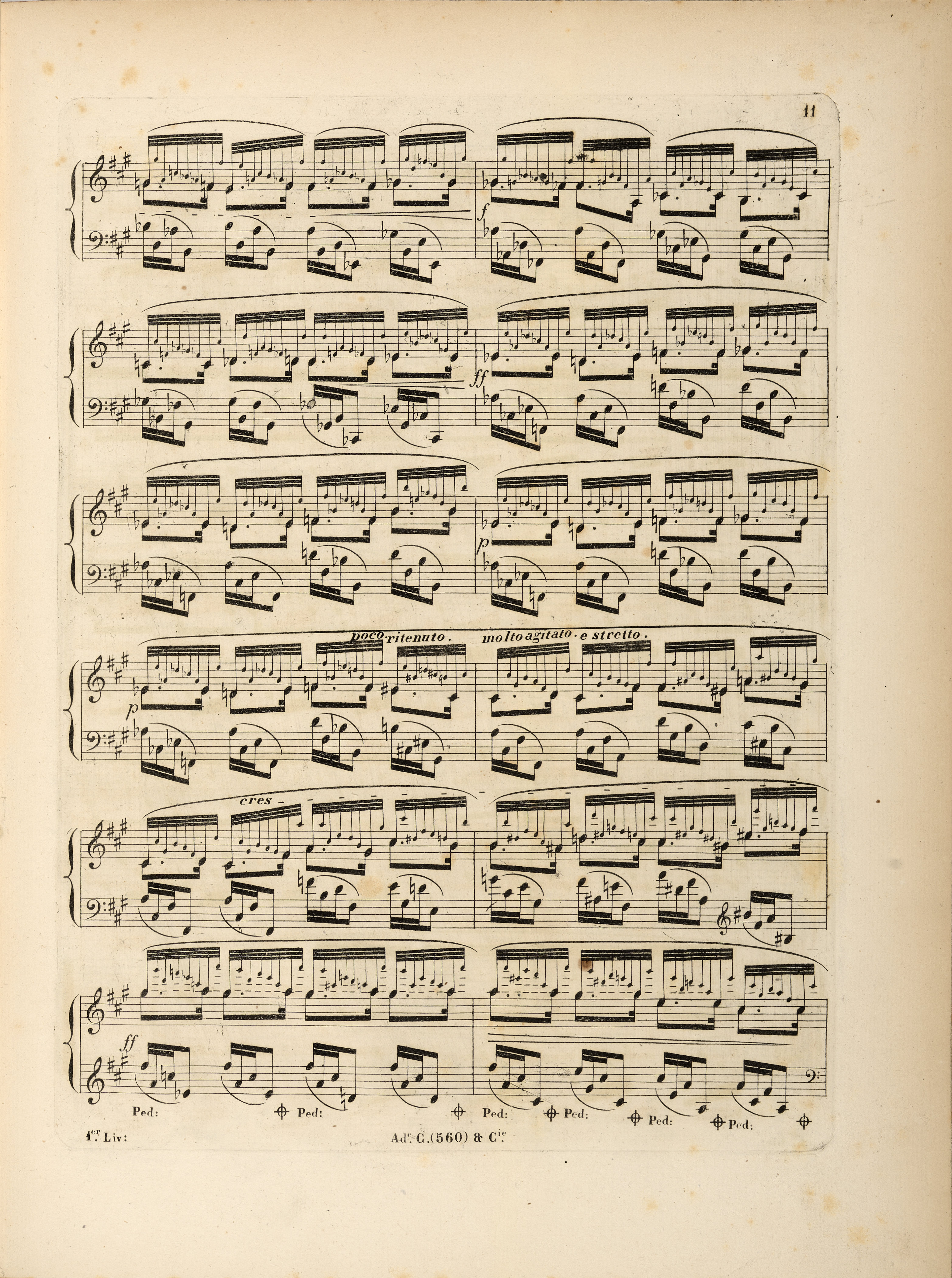



In A (→FC→GE1) there is no accidental before the 4th demisemiquaver in the 3rd group, as a result of which it is to be interpreted as a d 3. In FE (→EE), as well as in GE2 (→GE3), a
3. In FE (→EE), as well as in GE2 (→GE3), a  was added, thus lowering it to d3. In this case, Fontana's addition seems arguable, since there is a number of source and music arguments for d
was added, thus lowering it to d3. In this case, Fontana's addition seems arguable, since there is a number of source and music arguments for d 3:
3:
- the crossings-out and corrections visible in the adjacent bars prove that Chopin controlled the accidentals in A, cf. b. 22 and 24;
- the use of d1 and d2 after the C
 minor chord in b. 24 was marked by Chopin with naturals both in the R.H., where this accidental is necessary, and in the L.H., where it is only of a cautionary nature;
minor chord in b. 24 was marked by Chopin with naturals both in the R.H., where this accidental is necessary, and in the L.H., where it is only of a cautionary nature; - Chopin used a similar combination of notes enclosing a major chord in b. 24 (a1 and c
 2 next to the G major chord).
2 next to the G major chord).
However, since we cannot rule out an accidental oversight of a natural by Chopin in the discussed place (and hence the accuracy of Fontana's revision in FE), in the main text we include both possibilities in a variant form, giving preference to the literally interpreted version of A featuring a d 3.
3.
Compare the passage in the sources »
category imprint: Interpretations within context; Differences between sources; Editorial revisions
issues: Omissions to cancel alteration, GE revisions, FE revisions
notation: Pitch


